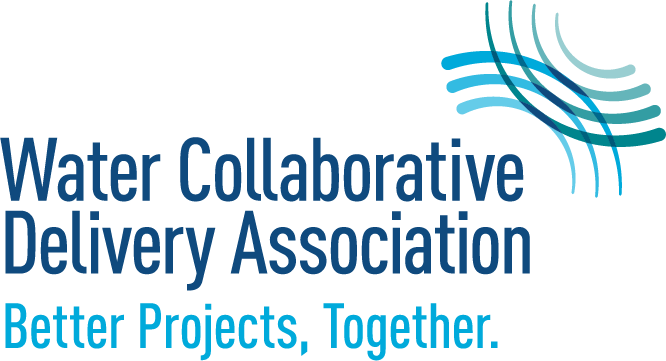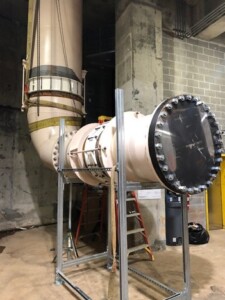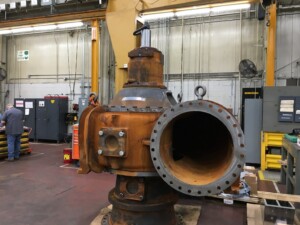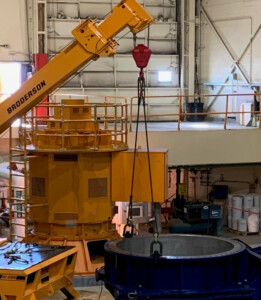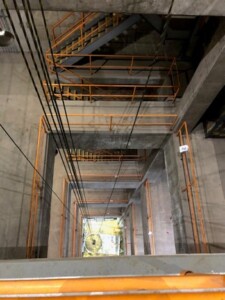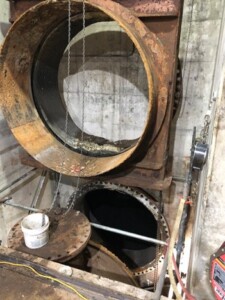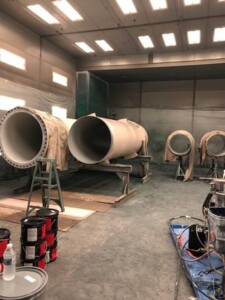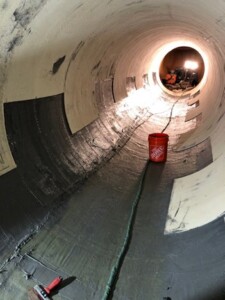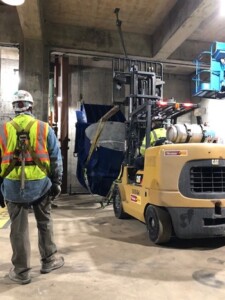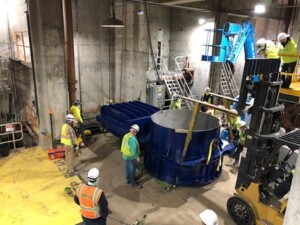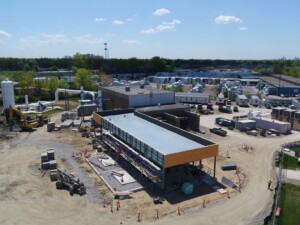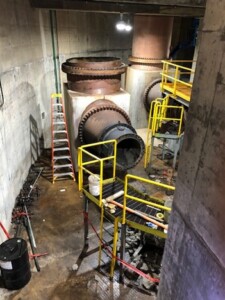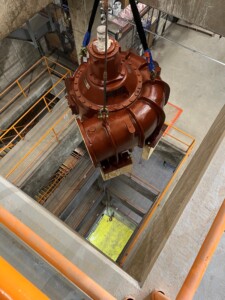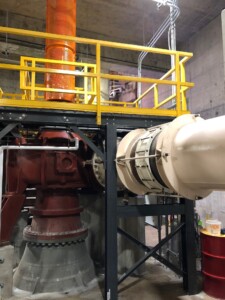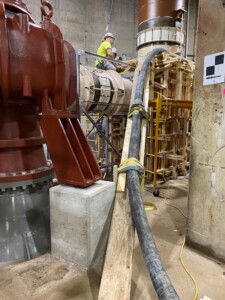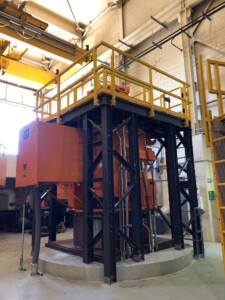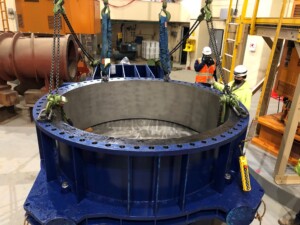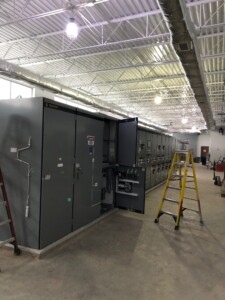Challenge
The Northeast Sewage Pump Station (NESPS) had been in service for over 60 years and its pumping and electrical components were becoming obsolete. The pump station renovation consisted of adding a new electrical building along with one new pumping system and replacing four of the existing ones. The largest challenge with this project was working to renovate the pumping facility while still maintaining pumping operations. The job had to be completed in phases to allow continuous operation of the existing pumping systems to meet EPA permit requirements, while new pumps were being demolished and installed.
All the existing equipment was well past it’s expected service life, so it was crucial that this project and its different phases were planned efficiently taking schedule into consideration. Another more specific challenge was the need to remove and refurbish five 84-inch knife gat valves that were installed prior to the concrete walls and ceilings around it. These valves needed to be disassembled in their concrete pits and taken out while stopping and diverting flow in the wet well using stop logs and exposing the pump station to the wet well in the process. It was challenging work because there was no way to cut off flow to the station for the entirety of the work activity.
Approach
The CMAR delivery method allowed for more collaboration between the owner, engineer, construction manager, and the building trades. This delivery method was helpful immediately with the prepurchasing of the long-lead process equipment and electrical gear during the design phase. The team was able to navigate many challenges from getting the EPA permitting to understanding the maintenance of plant operations to phasing of electrical equipment and coordination of generator backup power. Ultimately this provided a better final product for the owner within a reasonable schedule duration.
Results
As a result of this project, the greater population of Southeast Michigan will have a modern and reliable wastewater management system to utilize over the next several decades. One lesson learned through this project was to have the scope of responsibility for all project team members clearly identified before the start of the project. The triangle between the owner, engineers, and the CMAR was critical and once the relationships between each entity were defined, the product to the owner was elevated. Strong communication between project teams fosters a culture of teamwork that results in large projects like this one being completed successfully.
